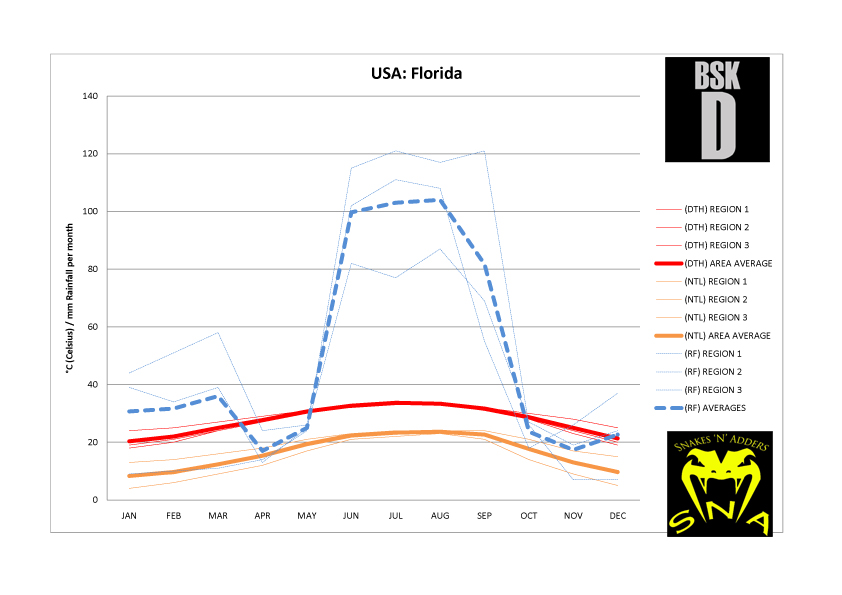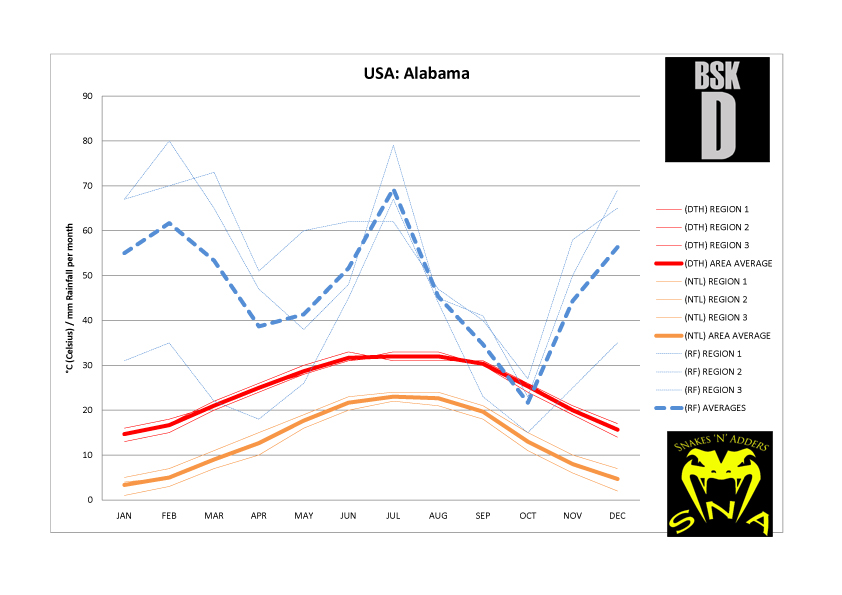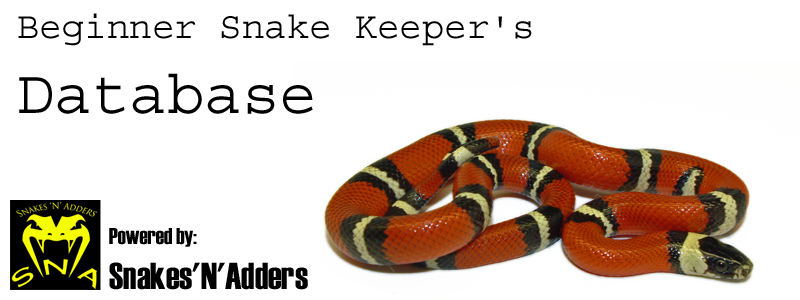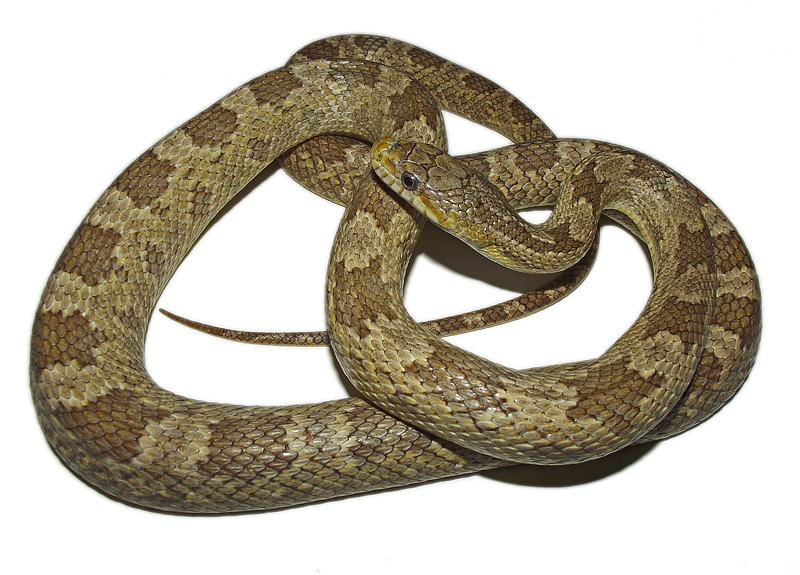
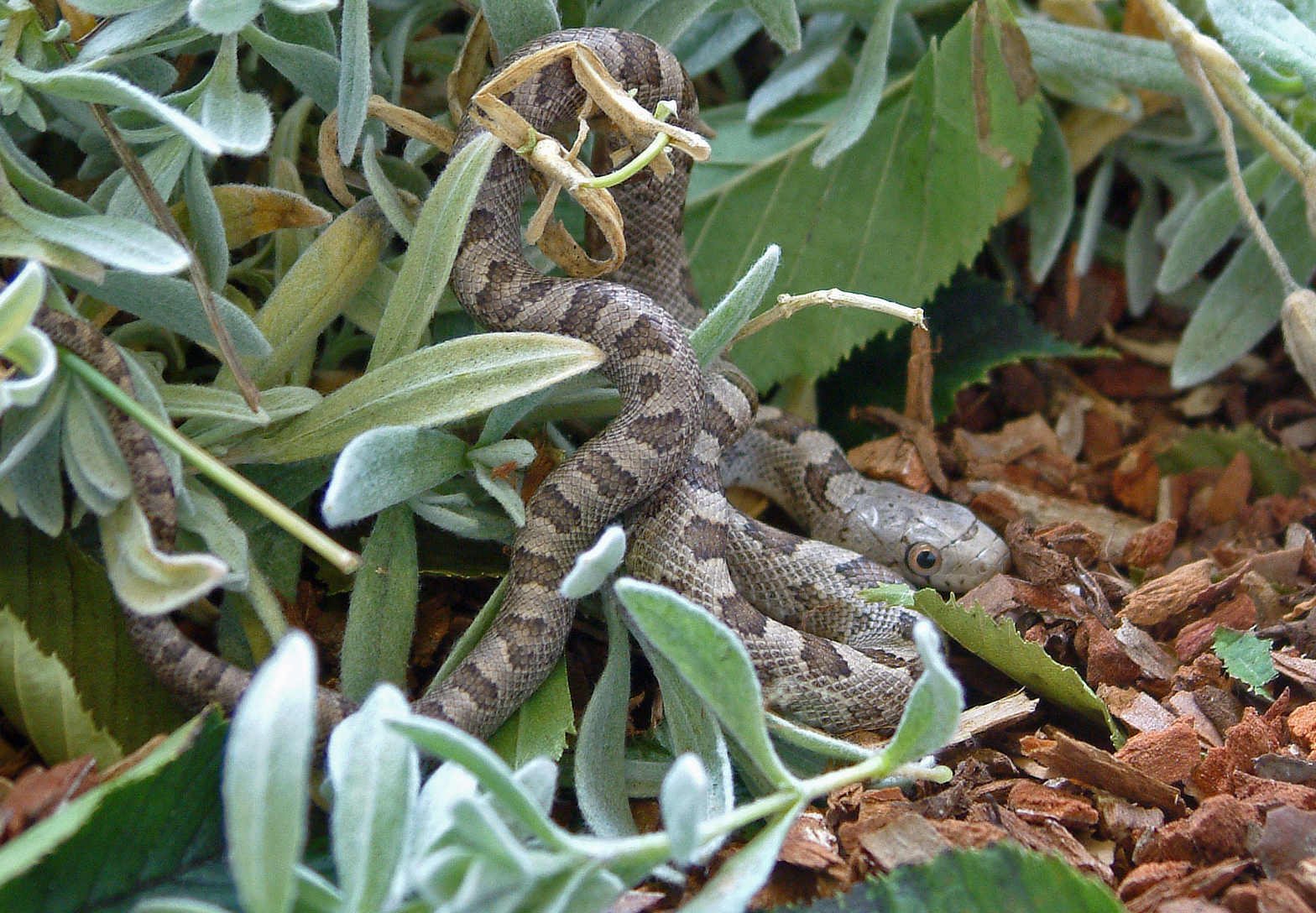
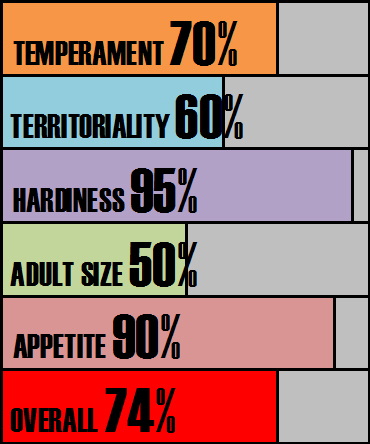

Species Notes based on experiences:
This subspecies is no longer recognised. It has enjoyed an ‘on again off again’ relationship with taxonomists. Who knows another paper next year may decide they are back on again. This is the problem with taxonomy it is built upon permanently shifting sands. Some consider this to merely be a naturally occurring inter-grade between what was the Grey Rat snake to the West (Pantherophis obsoletus spiloides) and the Yellow Rat Snake to the East (Pantherophis obsoletus quadrivittatus). Elements of colour and pattern are borrowed from wither side. This snake retains saddles throughout life same as the Western races of Grey and Texas Rat Snakes, but this palette includes far more yellow pigments with the influence from the Yellow Rat Snake. At birth they appear almost identical to the Grey Rat Snake but yellows slowly begin to build with growth.
Score analysis:
Temperament of Gulf Hammock Rat Snake for the most part is very good. This is a patient snake and makes a good species to handle. Babies occasionally may be defensive and rattle their tail through fright. IF particularly threatened they may raise the front of their body into a series of S’s. This is not a snake that is quick to bite however and would much rather wriggle and try to escape your grip. These behaviours are fleeting and animals will usually calm down well. Gulf Hammock Rat Snakes are more akin to Yellow and Everglades Rat Snakes than Grey and Texas Rat Snakes. They naturally seem tamer and more laid back and appear less ‘triggered’. Of course exceptions exist hence the score.
Territory disputes are more likely to occur than temperament issues. Regardless of how long you have had your Rat Snake they never seem fond of being disturbed and can be quite grumpy about it. This may involve darting to the other end of the enclosure or rattling their tail loudly in the substrate. Whilst this isn’t really a hissing snake they make their displeasure known by raising the front 1/3 of their body into a series of ‘S’s. The head may also be flattened. This is nearly always bluff. Once removed from the enclosure many of these behaviours will abate almost immediately.
Gulf Hammock Rat Snakes have proven in captivity to be as tough as its ‘obsoletus’ cousins. When it has been imported recognised as itself (which has and still occasionally does happen) it has posed no issues with neediness. This is not a heavy set snake like the Yellow Rat Snake and is more elegant in build reminiscent of the
Mature Gulf Hammock Rat Snakes are usually from 5-6ft in length. Exceptional animals may well exceed this. This is not a heavy set snake like the Yellow Rat Snake and is more elegant in build reminiscent of the Everglades Rat Snake. It is an active snake that likes to climb and investigate its enclosure. Provision of climbing apparatus would be recommended. This is a strong snake however and will feel more powerful than a Corn Snake of the same length. With this species it would be imperative that younger keepers meet the baby snake first prior to purchase to ensure it is calm and manageable. Grumpy examples do exist.
All North American Rat Snakes have a superb appetite. They will accept a range of prey items and grow rapidly. Care must be taken not to create obese animals as they are also willing to feed too well. Of all the things that could go wrong with a pet snake. A rat Snake and its love of food will not be one of them.
Enclosure recommendations:
Tub:
This species is not suitable for keeping in a tub long term
Vivarium:
120cm x 60cm x 60cm
Budget rig: -
60cm x 30cm heat pad
On / off thermostat
Digital thermometer to monitor thermostat performance
Warm hide
Cool hide
Water bowl
substrate
Recommended rig (vivarium only): -
250w ceramic heat emitter
Ceramic lamp holder and bracket
Bulb guard
Day night thermostat
Digital thermometer to monitor thermostat performance
Various logs and caves along the thermal gradient
Damp hide (optional)
Climbing and exercise branches
Plants and foliage (live or artificial – your choice)
Water bowl
Substrate
UVB light (8w T5 shade dweller 7% kit from Arcadia or equivalent) (optional)
Subterranean section to vivarium for further psychological security (optional)
Climate Analysis:
Being predominantly from the coastal regions of Florida Panhandle and Southern Alabama the Gulf Hammock Rat Snake enjoys a far more clement climate than most of its cousins. Winter may see animals slow down or spend short periods inactive. This period may be 2-3 months. Certain regions see winter day time highs in excess of 20°c ample for this snake to remain active. In captivity in the UK I would always recommend over wintering your animals for a couple of months at 15°c without food. This helps to keep the snake lean and also to bolster sperm production for males leading into breeding season.
Conclusion:
A superb pet snake that if you have the opportunity to source would make a great family addition. Therein lays the problem. They were barely recognised before the latest set of changes by Burbrink, plus we have now amalgamated the rest of the group into 3 species instead of 7 subspecies. The standards we once knew for the separate subspecies will be in fear of being lost. According to science there is no difference between the Yellow Rat snake of Florida and the Black Rat Snake of New York state, which of course is ridiculous to the human eye. The hobby has always bred for colour and standards and I would encourage them to still do so. We would have no reservations about a child keeping a Gulf Hammock Rat Snake as a first pet as long as they have had to opportunity to meet each other before purchase to ensure they are compatible.
.jpg)
